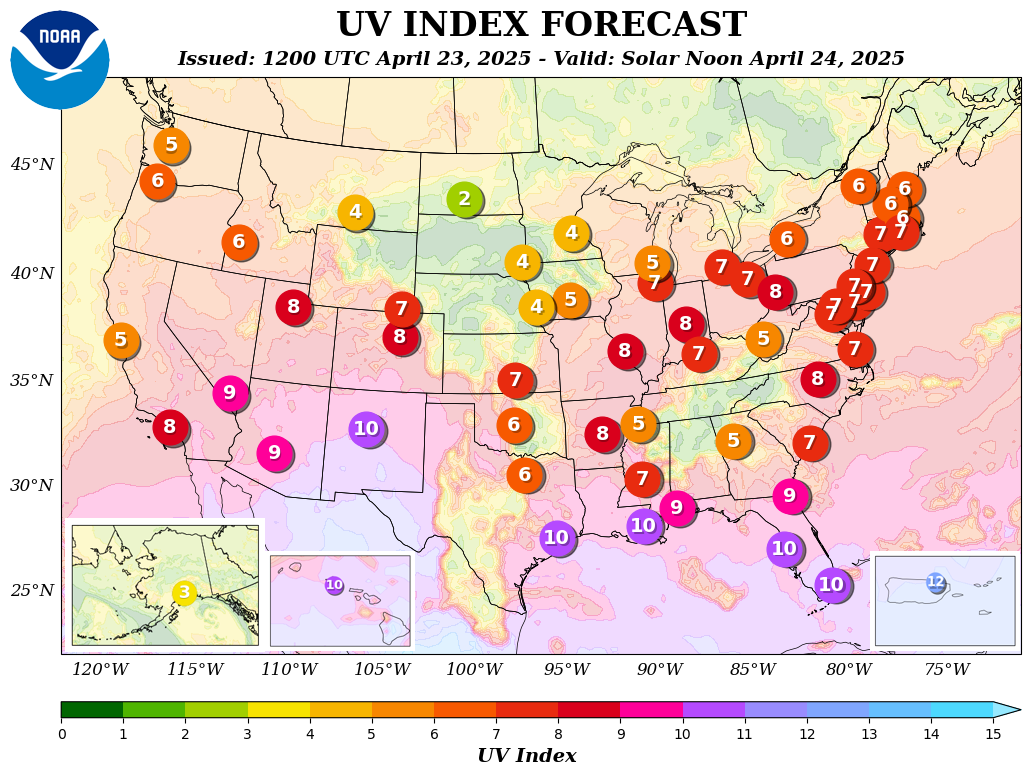UV Index
Tip: If your ZIP code is not found, try searching for your city and state. Some ZIP Codes may not be in our database.
To install the widget on your page: http://developer.epa.gov/envirofacts-uv-index-widget/
UV Index Forecast
The forecast map shows contour lines of predicted UV Index values during the solar noon hour. The map is created daily from National Weather Service forecast data. Click the buttons for Day 2, Day 3, or Day 4 to see the UV Index forecast for following days. You may notice a brief delay as each map loads. (To find the time of solar noon at your location, use the sunrise-sunset-solar noon calculator at the NOAA website.)
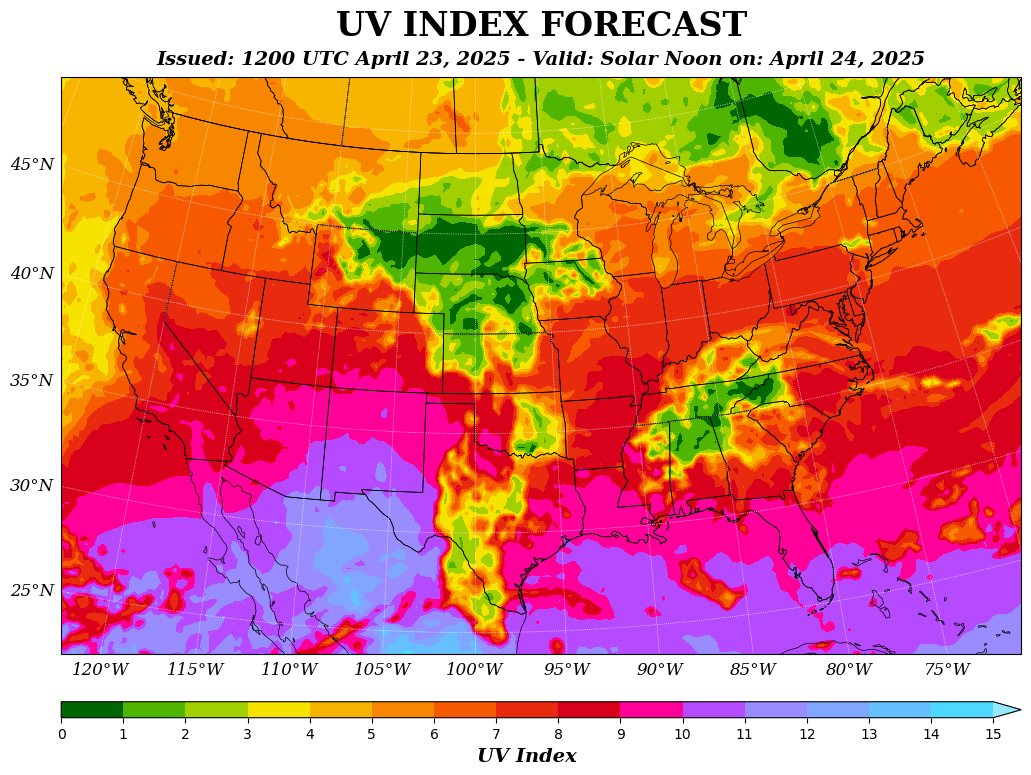
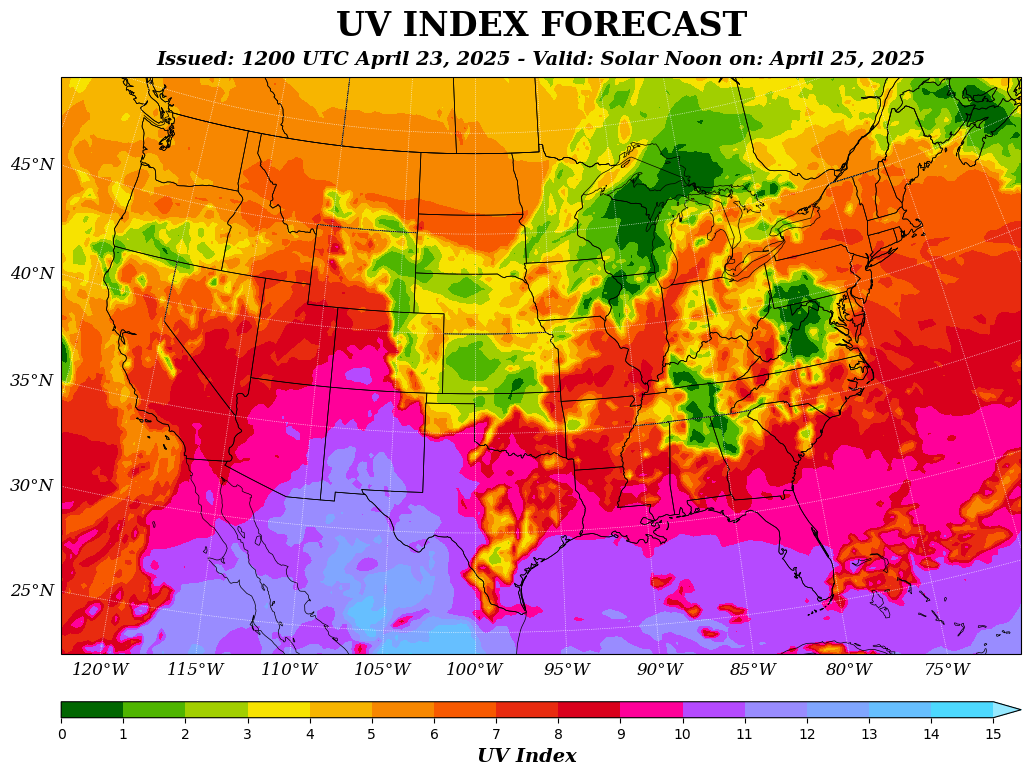
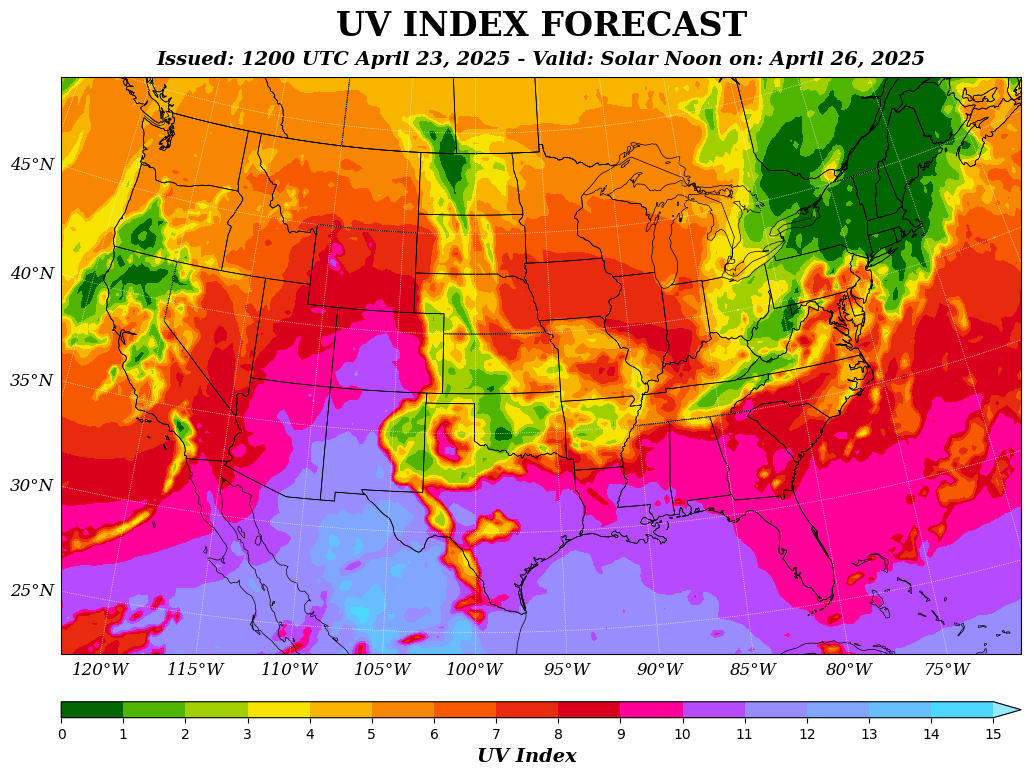
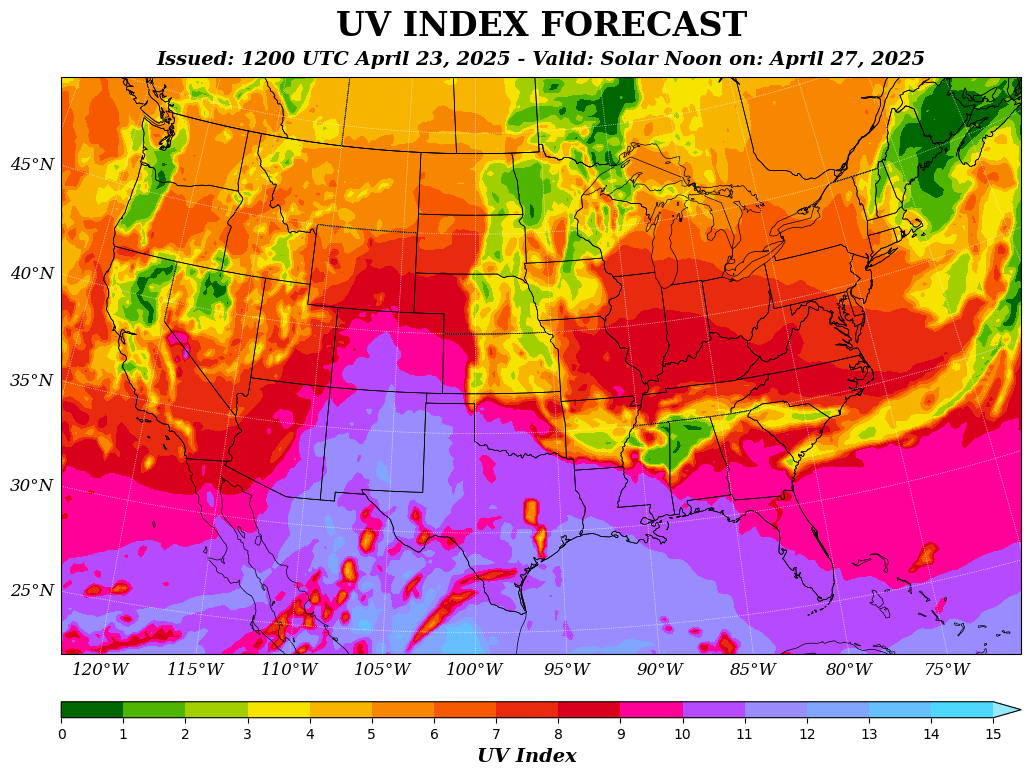
UV Index Forecast for US Cities
The map below shows predicted UV Index values during the solar noon hour for about 50 U.S. cities. It is created daily by the National Weather Service.
